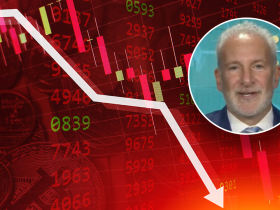On Thursday, the Federal Reserve revealed its schedule for the remaining meetings of 2023, with potential implications for interest rates. The Federal Reserve is expected to hold three more meetings this year, with the November assembly potentially triggering an interest rate hike. Market expectations suggest that the September and December gatherings will maintain the status quo on interest rates.
The Fed’s decisions regarding interest rates for the rest of 2023 are scheduled to be announced on September 20, November 1, and December 13. Each decision will be communicated at 2 pm ET, following a two-day meeting of Fed officials. Jerome Powell, Chairman of the Federal Reserve, will host a press conference half an hour after each rate announcement.
In addition to the rate decisions, updates on the Fed’s economic forecasts, including interest rate projections, will be provided during the September and December meetings. The minutes from each meeting will be disclosed three weeks later.
The Federal Reserve’s primary objectives are to control inflation and sustain full employment. Since 2021, efforts have been focused on curbing soaring inflation while maintaining a resilient job market. However, with August 2023’s CPI inflation at an annual rate of 3.7% and early signs of a weakening job market, there is a need to balance these two main objectives.
Current market sentiment indicates that interest rates will remain unchanged in the Fed’s September and December meetings. However, according to CME’s FedWatch Tool, there is a nearly 40% probability of an interest rate increase in the November meeting. This likelihood could rise if inflation continues unabated and if the job market remains robust.
Recent statements from Federal Reserve officials highlight patience, risk management, and data dependence in managing monetary policy with high-interest rates. While June projections indicated a potential second interest rate hike in late 2023, recent data may have swayed some policymakers’ commitment to this move. The possibility of another 2023 rate hike is still uncertain and largely dependent on incoming economic data.
Key indicators to watch include inflation reports with a particular focus on services and housing prices. Rising energy costs could further inflate headline inflation numbers, although the Fed may overlook these volatile components. Unemployment data will also be significant; a moderate cooling in the labor market could be viewed favorably by the Fed as a way to curb inflation without pushing the U.S. economy into a recession.
The current interest rate cycle is likely nearing its peak. If forthcoming economic data does not convince the Fed that inflation is returning to its 2% target, hints of another 2023 interest rate increase may emerge, possibly in November. However, if incoming data proves more favorable, the last hike may have already occurred in July.
This article was generated with the support of AI and reviewed by an editor. For more information see our T&C.
Read the full article here











Leave a Reply